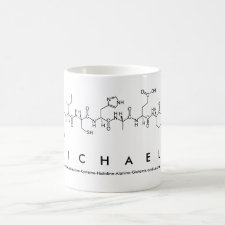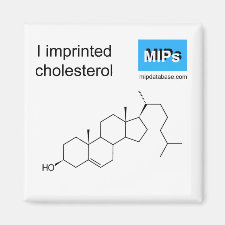
Authors: Whitcombe MJ, Rodriguez ME, Villar P, Vulfson EN
Article Title: A new method for the introduction of recognition site functionality into polymers prepared by molecular imprinting - synthesis and characterization of polymeric receptors for cholesterol.
Publication date: 1995
Journal: Journal of the American Chemical Society
Volume: 117
Issue: (27)
Page numbers: 7105-7111.
DOI: 10.1021/ja00132a010
Abstract: A novel approach to the introduction of recognition site functionality into highly cross-linked polymeric matrices via molecular imprinting has been developed for compounds with single (or multiple, spatially separated) hydroxyl groups. This new methodology relies on the use of the 4-vinylphenyl carbonate ester (1) which functions as a covalently bound template monomer but is easily and efficiently cleaved hydrolytically with the loss of CO2. This results in the formation of a noncovalent recognition site, bearing a phenolic residue, capable of interacting with the ligand (template) through hydrogen bonding. The polymers obtained by this method were shown to bind cholesterol with a single dissociation constant, thus displaying characteristics similar to a true biological receptor or synthetic host. It has also been shown that the phenolic residues introduced into the recognition site play an important role in the interaction with ligand, as evident from the suppression of cholesterol binding by chemical modification of the polymer with acetyl and benzoyl chlorides and by the addition of solvents which tend to disrupt hydrogen-bonding



Join the Society for Molecular Imprinting

New items RSS feed
Sign-up for e-mail updates:
Choose between receiving an occasional newsletter or more frequent e-mail alerts.
Click here to go to the sign-up page.
Is your name elemental or peptidic? Enter your name and find out by clicking either of the buttons below!
Other products you may like:
 MIPdatabase
MIPdatabase









